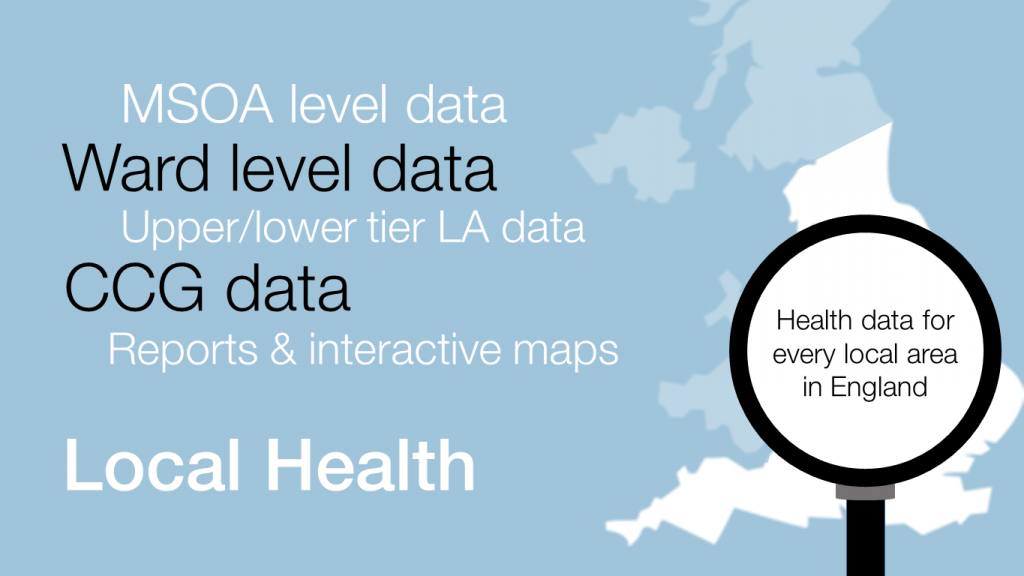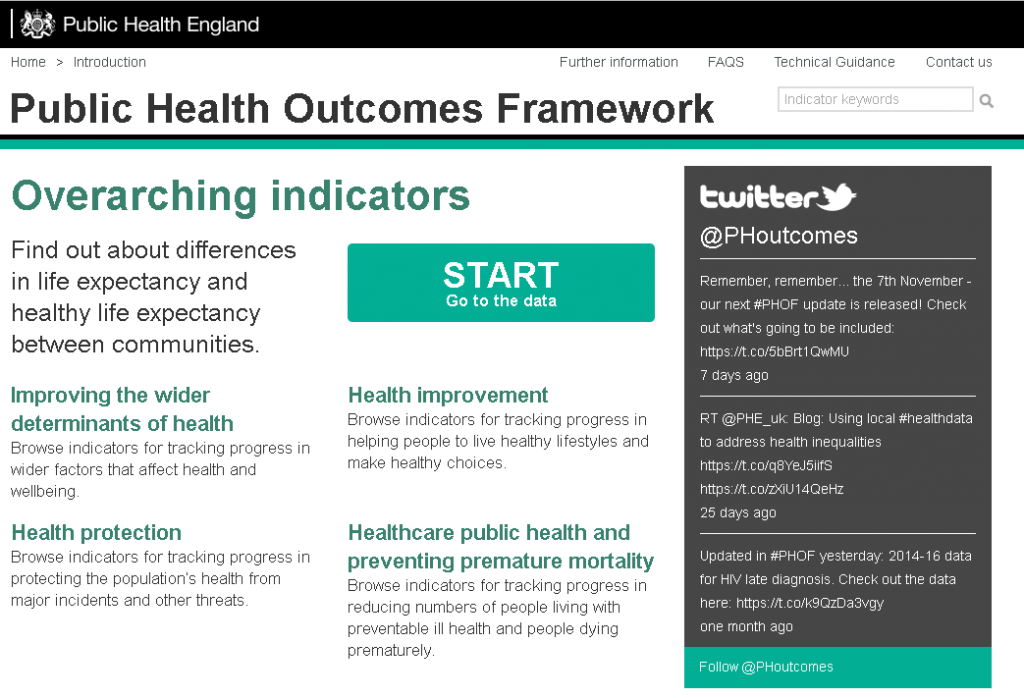Coronavirus (COVID-19): Real-time tracking of the virus

Find out how PHE together with researchers at the University of Cambridge are working to regularly nowcast and forecast COVID-19 infections and deaths.

Find out how PHE together with researchers at the University of Cambridge are working to regularly nowcast and forecast COVID-19 infections and deaths.

One of PHE’s core functions is disease surveillance; making sure we have the right information available to us at the right time to inform decisions and actions across the public health system. In this blog we set out PHE's approach to tracking COVID-19.

Public Health England’s Wider Determinants of Health tool has been updated, providing the latest data for key indicators of the ‘root causes’ of ill health.

This blog looks at the latest update to our Local Health platform, which presents indicators for small areas.

Find out why PHE is developing a framework to draw attention to the skills, knowledge and system enablers that are required to support a data-to-decisions journey.

Most of us want to live in good health for as long as possible; but while people are generally living longer, outcomes still vary hugely across the country as disturbing inequalities persist. PHE has been centrally involved in a new analysis of the Global Burden of Disease study, published today in The Lancet, which we explain the significance of in this blog.

PHE's evidence syntheses series aims to produce a rapid response to often complex public health questions where there is no existing evidence. Find out more about how this new product can support public health decision-making.

This is the latest in a series of blogs summarising what we learn each time we update the Public Health Outcomes Framework (PHOF). The PHOF sets out a vision for public health, desired outcomes and the indicators that will help …

This blog accompanies the official release of the Public Health Dashboard and is intended to serve as an introduction to the tool. What is the Public Health Dashboard? The purpose of the Public Health Dashboard (PHD) is to support local …

PHE's Spend and Outcome Tool allows users to see how much is being spent and the impact it is having on relevant outcomes, meaning they can compare across public health programmes, and compare these data against other local authorities.